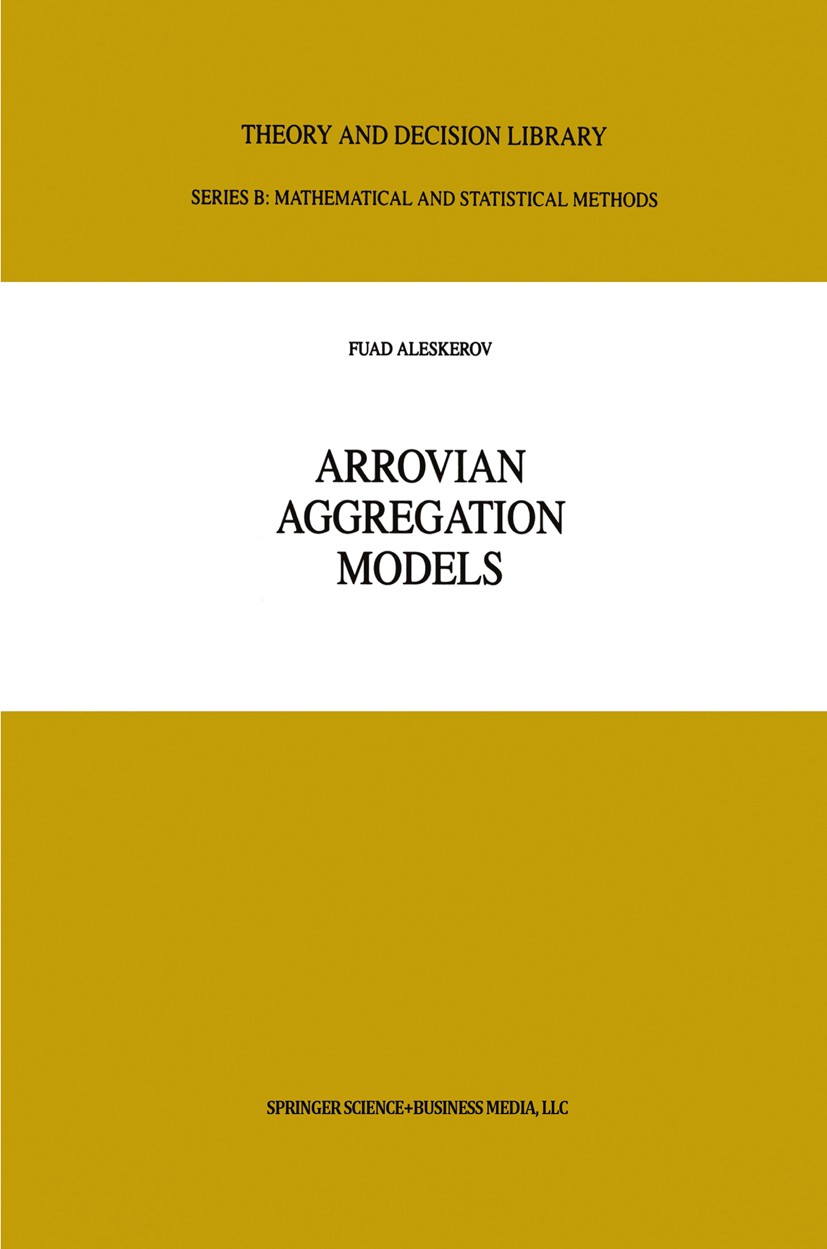| 期刊全称 | Arrovian Aggregation Models | | 影响因子2023 | Fuad Aleskerov | | 视频video | http://file.papertrans.cn/162/161774/161774.mp4 | | 学科分类 | Theory and Decision Library B | | 图书封面 |  | | 影响因子 | Aggregation of individual opinions into a social decision is aproblem widely observed in everyday life. For centuries people triedto invent the `best‘ aggregation rule. In 1951 young Americanscientist and future Nobel Prize winner Kenneth Arrow formulated theproblem in an axiomatic way, i.e., he specified a set of axioms whichevery reasonable aggregation rule has to satisfy, and obtained thatthese axioms are inconsistent. This result, often called Arrow‘sParadox or General Impossibility Theorem, had become a cornerstone ofsocial choice theory. The main condition used by Arrow was his famousIndependence of Irrelevant Alternatives. This very conditionpre-defines the `local‘ treatment of the alternatives (or pairs ofalternatives, or sets of alternatives, etc.) in aggregationprocedures. .Remaining within the framework of the axiomatic approach and based onthe consideration of local rules, .Arrovian Aggregation Models.investigates three formulations of the aggregation problem accordingto the form in which the individual opinions about the alternativesare defined, as well as to the form of desired social decision. Inother words, we study three aggregation models. What is common betweenth | | Pindex | Book 1999 |
The information of publication is updating

|
|
 |Archiver|手机版|小黑屋|
派博传思国际
( 京公网安备110108008328)
GMT+8, 2025-11-14 20:19
|Archiver|手机版|小黑屋|
派博传思国际
( 京公网安备110108008328)
GMT+8, 2025-11-14 20:19


